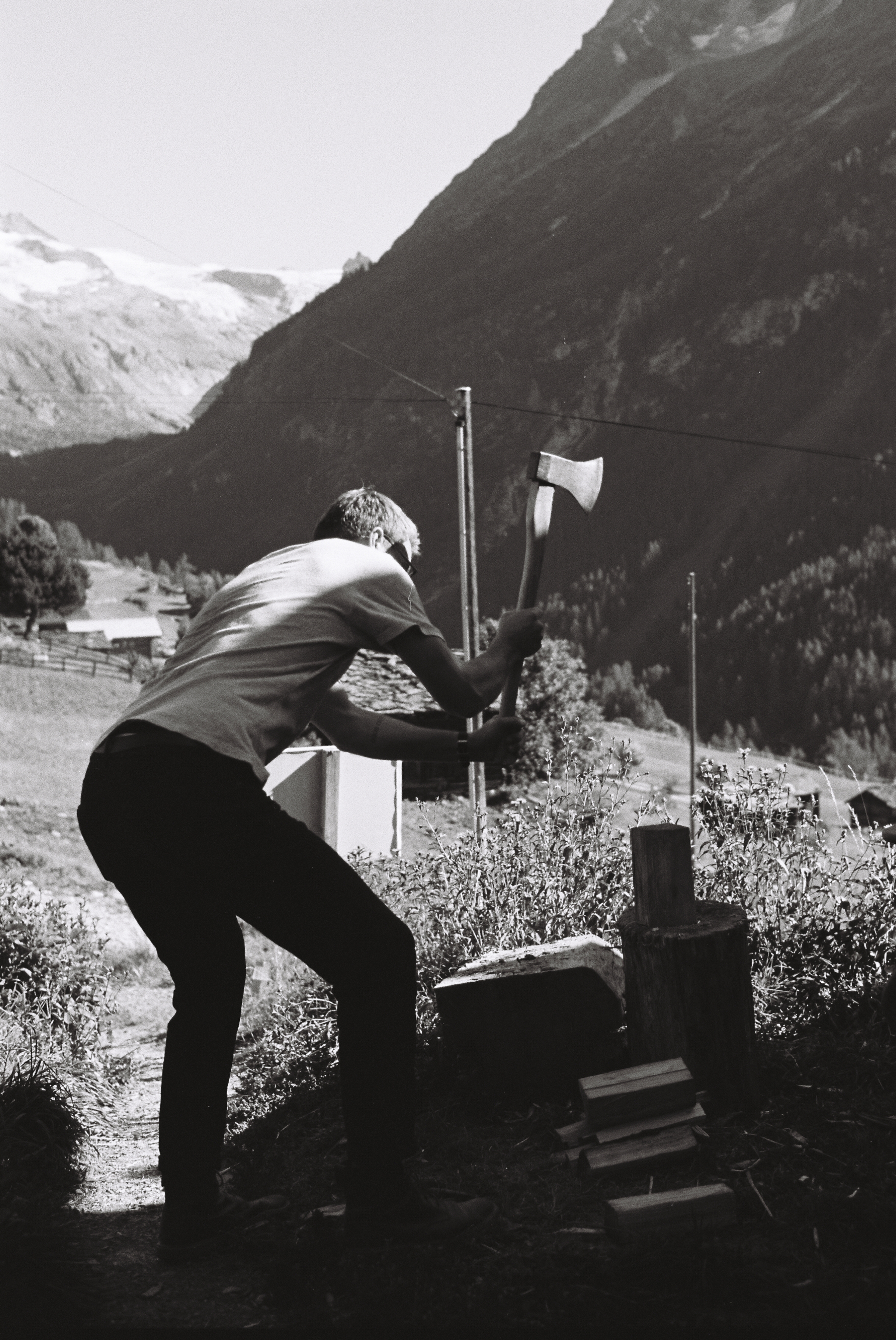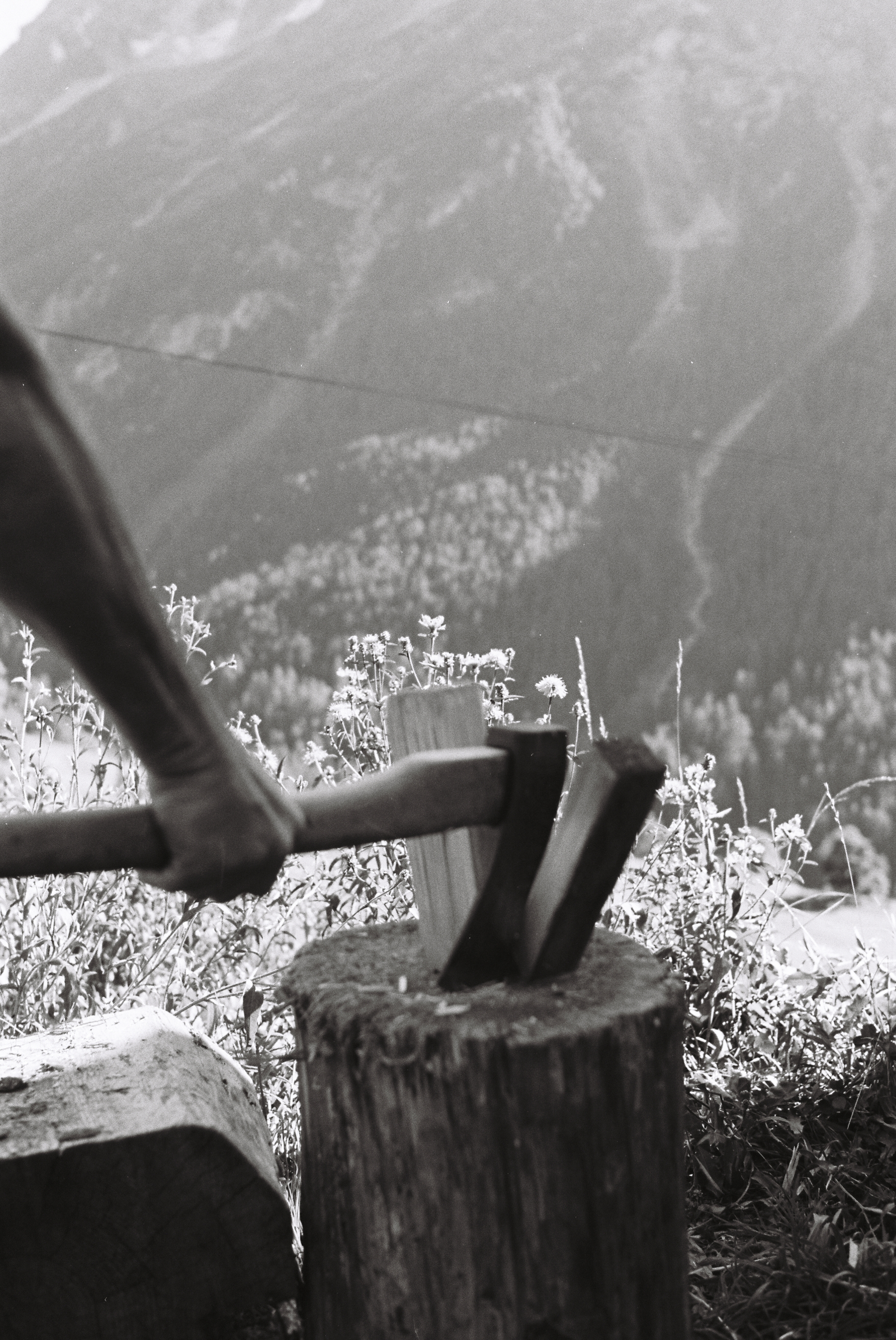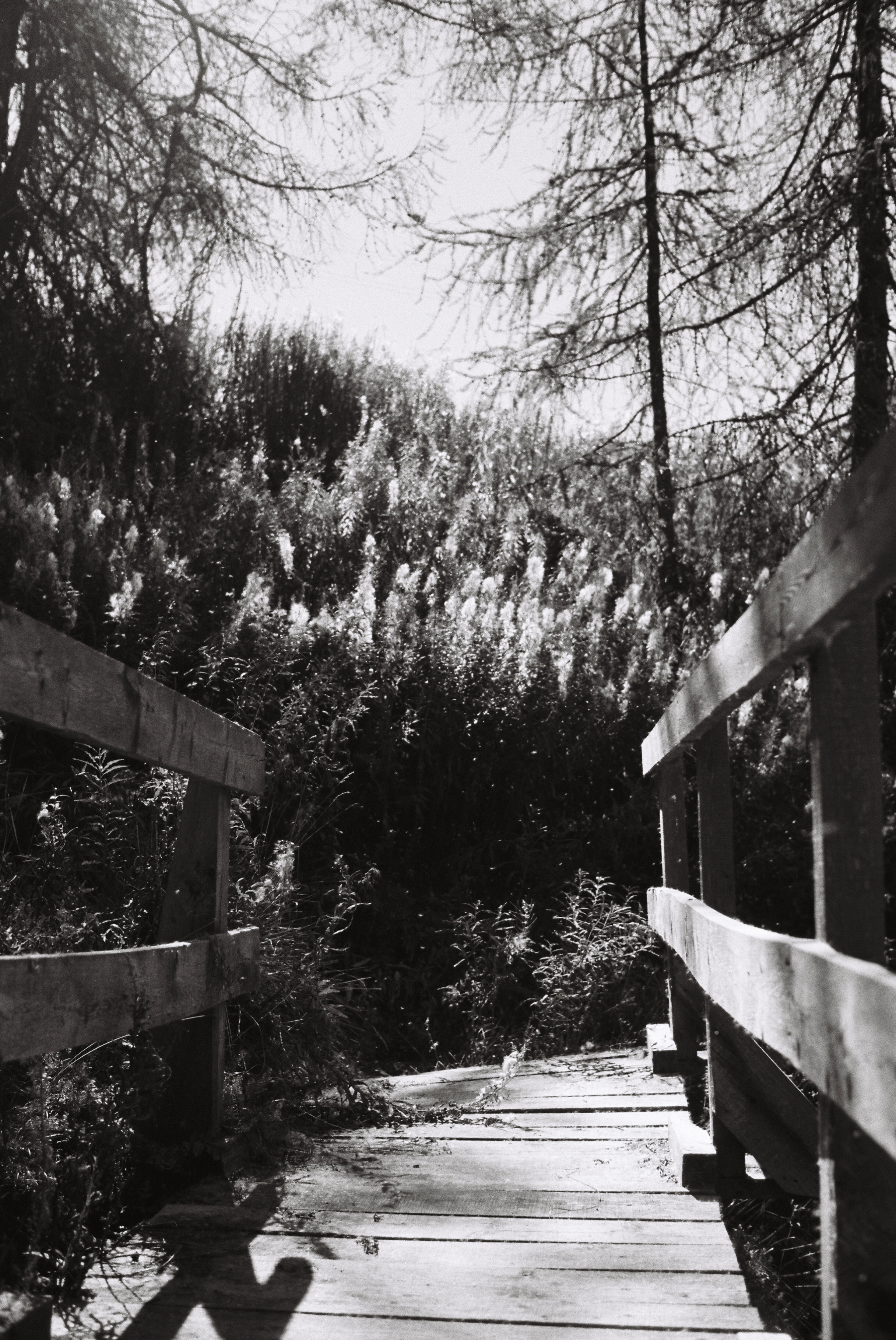A Quiet Moment, With A View
Words by Blake Shorter & Photographs by Lindsey Harris Shorter


In the Alps of southern Switzerland - just east of the French border and a couple of hours driving north from the ski resorts of the Aosta Valley in northern Italy - there’s a small village perched on a steep, grassy mountainside, on the side of the mountain that faces the sun. It’s a village in the sense that it’s a group of mostly-residential, sturdy wooden chalets, but there’s also a restaurant and a store with very limited hours that carries dry goods and toiletries . The small sign on the paved road that winds up the mountain and through the village reads ‘La Forclaz’. In the warmer months, the locals tend to their sunny gardens overflowing with alpine wildflowers and alive with chirping, bouncing crickets and the busy hum of bees. Well-marked trails at the edge of town lead up the mountain towards cooler, thinner air (and an elevated heart rate), curving and twisting through forests of giant evergreens that open to steeply rolling grass-covered plains and even more remote cabins and barns inhabited by alpine cattle and the farmers who live alongside them. When the heavy snows of winter blanket the gravel footpaths and narrow roads leading in and out of the village below, I imagine the townspeople collectively nestling in front of their fireplaces with hot chocolate and a book, bedding down and hoping the firewood lasts until the sun comes out again.
In La Forclaz there is a cluster of structures that, glancing up from the long hillside path, look exceptionally rustic - but walking closer reveals precisely-centred glass windows, set seamlessly into the rough wood of the exterior walls and reflecting the view of the mountains they mirror. The path diverges near a chest-high pile of cut wooden logs, and a stump for cutting down the larger logs into kindling. Individual footpaths zig-zag up the steep slope and lead to the buildings’ entrances. They are mayens: former agricultural structures not much more sophisticated than a barn, and used for sheltering both animals and farming families alike during the summer months when they would migrate higher up the hillside to graze and escape the heat and humidity of the valley below.
‘Anakolodge’ is the name for a group of these mayens in the village of La Forclaz that were saved from demolition when they were purchased by a Swiss architect - the renovation of which became a life’s work. The exteriors were preserved, the ancient conifer logs of the frame and the layered slate roofs kept intact or restored. The interiors were treated differently and completely redesigned - the smooth concrete floors are warmed by the heat generated from the wood-fired oven, as is the water in the Italian-style concrete shower. The walls transition gently from concrete to solid blonde wood, and the interior design is a melding of retro and mid-century styles and minimalist simplicity. Sounds really nice, and it is. There’s a table and chairs outside, sitting on the dark green carpet of ankle-high grass and tucked in next to the huge swinging window/door that works as an additional entrance. Another path leads from the outdoor table to a wooden hot tub, that’s also wood-fired. The king sized bed downstairs sits opposite a glass wall that looks out to a concrete (of course) patio that’s covered by the roof of the mayen and half-underground, built into the mountainside.
The elevated cabin hovers out over a deep valley far below, and I have to crane my neck to see the top of the mountain directly across the valley. Looking down, I see the patchwork stone roofs of other cabins, and beyond that are green, red, and grey mountains.
There were other visitors staying in the cabin nearest ours. My wife Lindsey and I had seen them the first day wearing cycling kits and shoes, click-clacking down the path towards the parking area, then hopping on mountain bikes and setting off for the biking trails that weave through the alpine terrain. On this day, later in the afternoon as I began to kindle a fire to warm up the hot tub, one of these neighbours swung his hinged glass window wide and stepped out to greet me in the space between our cabin and theirs. He was a middle-aged man with dark hair and a youthful face. He said ‘bonjour’ and waved and I said ‘bonjour’ and waved back. He asked (reasonably) if I was American and I told him yes and that we were on a holiday. It was clear that he was French so I added that we had been in France for the previous two weeks and had been falling in love with his country. His English was exponentially better than my French, but still broken, though it was clear he was attempting to make conversation.
He made a circle in the air with his index finger and asked where we’d been traveling, and I held up my index finger and drew a crude circle too, while explaining we’d landed in Amsterdam, took a train down to Paris and stayed a week, then took a longer train to the Languedoc region of southern France, and spent time in Provence and the Luberon before making our way to the Swiss Alps. I said the names of these places with my very best French accent, and he nodded along. Then I told him we were traveling to Burgundy next, and we were excited to visit the legendary winemaking region. A confused look came over him, and he said ‘I don’t know this place’. I said it louder and enunciated more: “Bur-gun-dy”, but this did nothing in the way of helping. I shrugged, but then his eyebrows rose and he looked up - “Ah! Borghundie!”. I excitedly confirmed the understanding and tried to explain with more detail that yes, I was an American, but more specifically I’m from the Deep South, and this probably didn’t help my attempts at equivocating the nuances of the French language.
Our communication was successful enough for me to understand and accept his invitation to dinner that night at their cabin, where he said that he and his companions had brought some of their own wines and had picked up the ingredients to make fondue (my only experience with fondue had been from hearing about others’ experiences at the Melting Pot, a kitschy American chain restaurant). We had planned to find a wine shop before leaving France to stock up for our stay in the Alps, but had neglected it in the rush to hit the road as early as possible to cover the 500-plus kilometres between where we were in Provence, and where we’d ended up. The local co-op had a great selection of ciders and beers and we’d been having our fair share each night, so we were excited for a break from the malt and hops and the prospect of trying some French mystery wines with our neighbours.
That evening after dusk had fallen, we could see the yellow light glowing and the silhouettes of our neighbours moving in the kitchen through the open curtains of their cabin. We were strangely on edge, excited to meet, eat and drink with foreign strangers, but also terrified about how we’d communicate - with an added mostly-comical fear of being the characters in a based-on-real-life-events horror movie in which naive American tourists are invited over for fondue in a cabin in the Swiss Alps and never…seen…again.
Luckily, our fears weren’t realised and we were welcomed convivially with a spread of meats, bread and cheese - appetizers before the main course of more bread and cheese - and a bottle of white Burgundy that tasted like wet rocks and popcorn. Meanwhile, the two women of the group were generously pouring a liberal amount of Burgundy Chardonnay into the pots of melting cheese.
There were two fondues, a Swiss rendition made with Gruyere, a sweet and earthy cheese from the agriculturally famous region just north of where we were staying, and a French fondue made with smoky, funky Tomme. We all agreed that the French fondue was the best, although it may have been made with a little more love. We ate and drank and talked, laughing when we couldn’t find the words to express ourselves. The other man in the group was named Franck, and he became the translator for his companions when our French vocabulary would invariably fall short. We told our hosts that the meal had been deliceau, and one of the women laughed and tried to help us perfect our pronunciation - “no, delicEAU” she said. We repeated deliCEAU to which she responded “no, delicEAU”. This went on for a while, but ended in laughter and a somewhat approving nod in concession to our efforts.
We made the short walk back to our mayen at the end of the night, drunk on wine and conversation and an overarching feeling of togetherness - with each other, with our new friends, with the dark watchful mountains like inky and jagged rogue waves frozen in time and silhouetted on the horizon. Above us were more stars than we’d ever known could light the night sky. The outdoor hot tub was still steaming and warm when we lifted off the wooden top, and we climbed in and sat silently, looking up as sparks from the waning embers crackled and climbed over our heads, above the dark line of the mountains and towards the moon, flickering and disappearing into the infinite.
To see more of Blake and Lindsey’s work together, click here.











